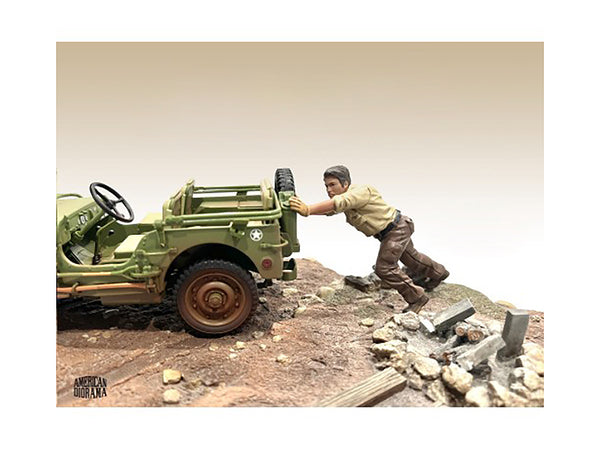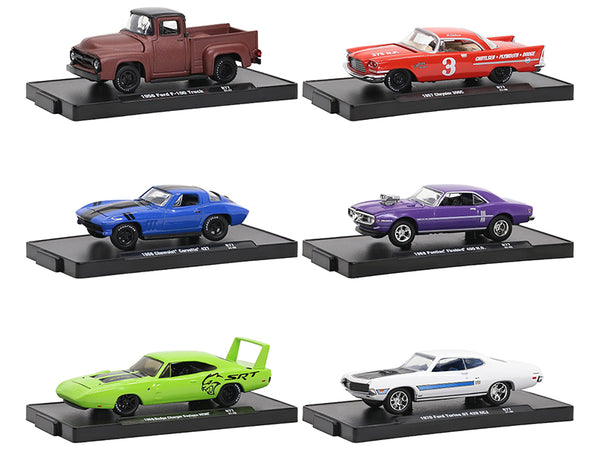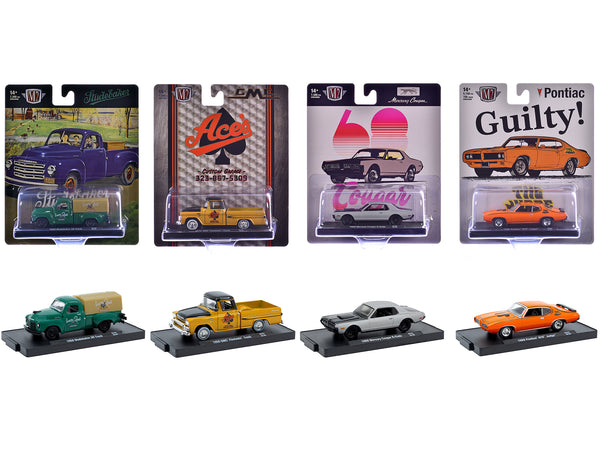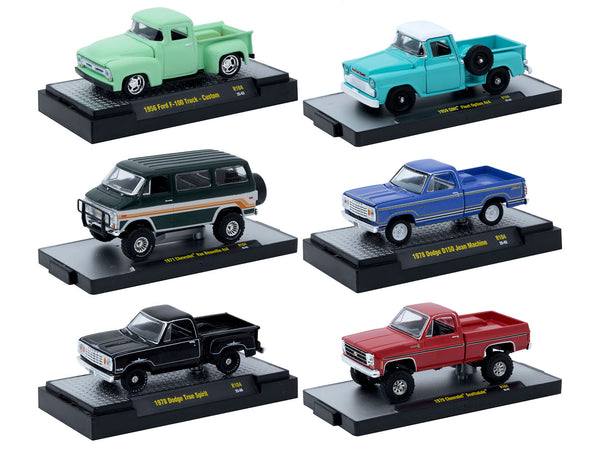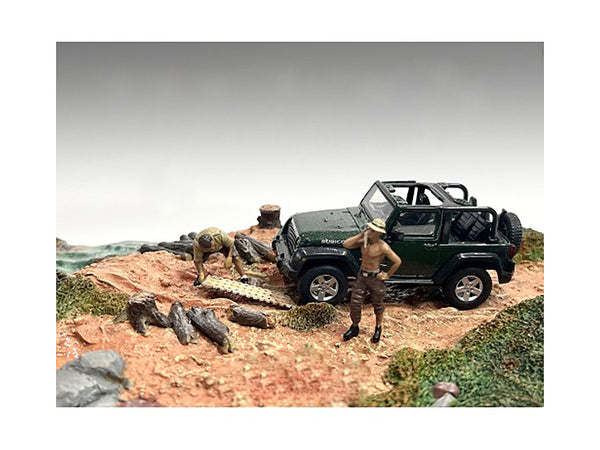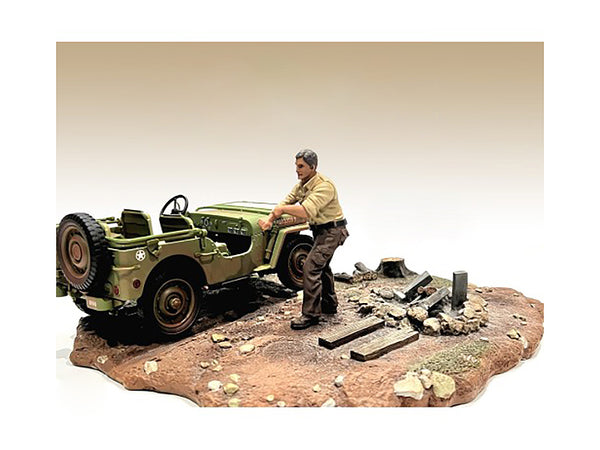
Mastering the Art of Scale Modeling: Tips and Techniques for Model Kits of Cars
Related Products
Share
Are you ready to take your scale modeling skills to the next level? In this article, we will delve into the world of scale modeling and provide you with invaluable tips and techniques to create stunning model kits of cars. Whether you are a beginner or a seasoned modeler, mastering the art of scale modeling requires a combination of precision, creativity, and attention to detail.
From choosing the right kit to enhancing the realism with weathering techniques, we will cover it all. Learn how to select the perfect model kit cars, understand the different scales available, and discover the tools and materials needed to bring your car models to life. We will also explore techniques such as painting, decaling, and assembly, offering step-by-step guidance to achieve professional-looking results.
Embark on an exciting journey as we unlock the secrets of scale modeling. Get ready to unleash your creativity and transform a box of parts into a miniature masterpiece. Whether you aspire to recreate iconic automobiles or showcase your own customized designs, this article will equip you with the knowledge and skills to excel in the world of scale modeling.
When it comes to scale modeling, there are various types of model kits available for cars. From classic cars to modern sports cars, the options are endless. One of the first things you need to consider is the scale of the model kit. The most common scales for car models are 1:24, 1:32, and 1:43, but there are also other scales available depending on your preference.
Once you have decided on the scale, you can choose between plastic model kits and metal die-cast model kits. Plastic model kits are the most popular choice as they offer a wide range of options, including customizable parts and accessories. On the other hand, metal die-cast model kits are known for their durability and realistic details.
To select the perfect model kit, consider your skill level, budget, and personal interests. Research different brands and read reviews to ensure you choose a high-quality kit that suits your needs. Remember, the right model kit will lay the foundation for a successful scale modeling project.
Before you begin assembling your model kit, it's crucial to gather the necessary tools and materials. Here are some essential items you'll need:
1. Hobby knife: A sharp hobby knife is essential for trimming and removing parts from the sprue. It allows for precise cuts and helps prevent damage to the pieces.
2. Sandpaper and files: Sandpaper and files are used for smoothing rough edges, removing mold lines, and preparing surfaces for painting. Different grits of sandpaper are available, so choose accordingly.
3. Plastic cement: Plastic cement is used to bond plastic parts together. It creates a strong and durable bond, ensuring the model kit stays intact.
4. Paints and brushes: High-quality paints and brushes are essential for achieving a realistic finish. Acrylic paints are commonly used in scale modeling due to their ease of use and fast drying time.
5. Decals and stickers: Decals and stickers are used to add logos, numbers, and other details to the model kit. They can greatly enhance the overall appearance of the finished model.
6. Clear coat: A clear coat is applied to protect the paintwork and provide a glossy finish. It also helps to seal the decals in place and prevent them from peeling off.
By having these tools and materials readily available, you'll be well-equipped to tackle any scale modeling project with confidence.
Before you start assembling the model kit, it's important to carefully examine the parts and ensure they are free from any defects or imperfections. Check for any mold lines, flash, or warping, as these can affect the overall appearance of the finished model.
To prepare the parts for assembly, remove them from the sprue using a hobby knife or sprue cutter. Take your time and be careful not to damage the parts. Once the parts are removed, use sandpaper or a file to smooth any rough edges and ensure a proper fit during assembly.
Next, dry-fit the parts together without glue to test the fit and alignment. This step is crucial to identify any issues and make adjustments before applying adhesive. If you encounter any fitment problems, use sandpaper or a file to make minor modifications and ensure a seamless fit.
Once you are satisfied with the fit, follow the instructions provided with the model kit to apply the appropriate adhesive and assemble the parts. Take your time and pay attention to details to ensure a precise and sturdy construction. A well-assembled model kit forms the foundation for the subsequent steps of painting and detailing.
Painting is a crucial step in scale modeling as it brings your model kit to life. Here are some techniques to help you achieve professional-looking results:
1. Primer: Before painting, it's recommended to apply a primer to the model kit. Primer enhances paint adhesion and provides a smooth surface for better color application. Choose a primer suitable for the type of paint you'll be using.
2. Base coat: Start by applying a base coat to the model kit. This is the primary color that will serve as the foundation for additional layers of paint. Use thin coats and allow each layer to dry before applying the next.
3. Layering: To create depth and realism, layer different shades of the base color. This technique is known as dry brushing. Use a lighter shade of the base color and gently brush it over raised surfaces to highlight details and create shadows.
4. Detailing: Use fine brushes and steady hands to paint small details such as windows, grilles, and headlights. Acrylic paints are recommended for their ease of use and ability to mix colors.
5. Washes: Apply washes to create weathering effects and enhance the model's details. Washes are thin mixtures of paint and water or specialized products that are applied to recessed areas to simulate dirt, grime, and shadows.
6. Clear coats: Once you are satisfied with the painting, apply a clear coat to protect the finish and provide a glossy or matte appearance, depending on your preference. Clear coats also help seal in decals and prevent them from peeling off.
By mastering these painting and detailing techniques, you can create a model kit that looks incredibly realistic and visually appealing.
To take your scale modeling to the next level, here are some additional tips to achieve realistic effects:
1. Research and reference photos: Before starting a scale modeling project, gather reference photos of the car you are modeling. Pay attention to details such as colors, textures, and weathering effects. This will help guide your painting and detailing process.
2. Dry fitting: As you progress with the assembly and painting, regularly dry fit the parts together to ensure a seamless fit and alignment. This will help you identify any issues and make necessary adjustments before final assembly.
3. Patience and practice: Scale modeling requires patience and practice to achieve the desired results. Take your time, experiment with different techniques, and learn from each project. With practice, your skills will continuously improve.
4. Weathering powders and pigments: Weathering powders and pigments are used to create realistic effects such as rust, dirt, and wear. Apply them lightly with a brush or sponge to add depth and texture to your model kit.
5. Experiment with different techniques: Don't be afraid to try new techniques and experiment with different products. Scale modeling is a creative hobby, and exploring new techniques can lead to unique and impressive results.
Remember, practice makes perfect. The more you immerse yourself in scale modeling and experiment with different techniques, the better you will become at achieving realistic effects.
Weathering is an essential aspect of scale modeling that adds depth and realism to your model kit. Here are some weathering techniques to consider:
1. Dry brushing: Dry brushing involves applying a small amount of paint to a brush and then removing most of it on a paper towel. Lightly brush the remaining paint over raised surfaces to simulate wear and tear.
2. Washes: Washes are thin layers of paint or specialized products that are applied to recessed areas to simulate dirt, grime, and shadows. Apply the wash and then remove excess with a damp brush or cloth.
3. Chipping and scratching: Use a small brush or sponge to create chipped or scratched paint effects. Apply a contrasting color to represent exposed metal or primer beneath the paint.
4. Rust effects: Rust effects can be achieved using various techniques, such as applying rust-colored pigments or using specialized rusting solutions. Experiment with different methods to achieve the desired rust effect.
5. Oil and fuel stains: Use oil-based paints or specialized products to simulate oil and fuel stains on the model kit. Apply them sparingly and blend them with a brush or cotton swab for a realistic appearance.
Remember, weathering should be done in moderation. Start with subtle effects and gradually build up to achieve a realistic and balanced weathered appearance.
Once you have completed your model kit, it's time to display and showcase your masterpiece. Here are some tips to make your model kit stand out:
1. Display case: Invest in a display case to protect your model kit from dust and damage. Choose a case that fits the size and scale of your model kit, and consider adding a small plaque with the car's details.
2. Diorama: Create a diorama to showcase your model kit in a realistic setting. Build a small scene with props, figures, and scenery that complements the car model. This adds depth and interest to your display.
3. Photography: Capture high-quality photographs of your model kit to share on social media or in modeling communities. Experiment with different lighting and backgrounds to enhance the visual appeal of your model.
4. Share your work: Participate in modeling competitions or join online communities to share your work and receive feedback from fellow modelers. This will not only inspire you but also help you improve your skills.
By showcasing your completed model kit with pride, you can inspire others and gain recognition for your hard work.
If you're looking to further enhance your scale modeling skills, there are numerous resources available. Here are some recommendations:
1. Online forums and communities: Join online scale modeling forums and communities to connect with fellow enthusiasts, share tips, and seek advice. These platforms are a wealth of knowledge and provide a supportive community for modelers of all levels.
2. Modeling magazines and books: Subscribe to modeling magazines or purchase books dedicated to scale modeling. These publications often feature step-by-step tutorials, tips from experts, and inspiration for your next project.
3. YouTube tutorials: YouTube is a great resource for learning new techniques and watching step-by-step tutorials. Many experienced modelers share their knowledge and provide valuable insights through video demonstrations.
4. Model shows and exhibitions: Attend local model shows and exhibitions to see the work of other modelers, learn from their techniques, and get inspired by the creativity on display. These events often feature workshops and demonstrations by experienced modelers.
By immersing yourself in the scale modeling community and utilizing available resources, you can continue to develop your skills and stay up-to-date with the latest trends and techniques.
Embark on an exciting journey as you unlock the secrets of scale modeling. With the tips and techniques shared in this article, you can transform a box of parts into a miniature masterpiece. Whether you aspire to recreate iconic automobiles or showcase your own customized designs, mastering the art of scale modeling requires dedication, practice, and attention to detail.
Remember, scale modeling is a creative and rewarding hobby that allows you to express your passion for cars and showcase your craftsmanship. By choosing the right model kit, gathering the essential tools and materials, and mastering painting, detailing, and weathering techniques, you can create stunning model kits of cars that truly stand out.
So, get ready to unleash your creativity and embark on an exciting journey into the world of scale modeling. Whether you are a beginner or an experienced modeler, there's always something new to learn and explore. Enjoy the process, have fun, and let your imagination run wild as you bring your car models to life. Happy modeling!
